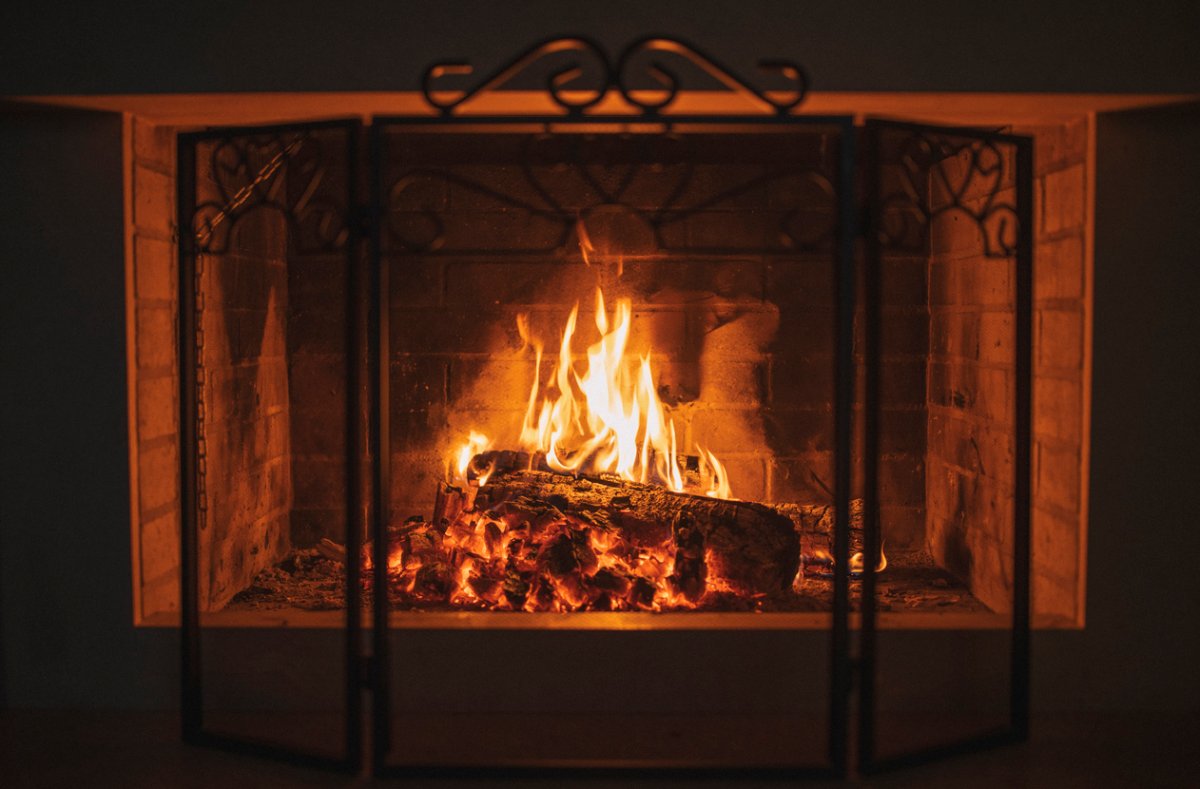We may earn revenue from the products available on this page and participate in affiliate programs. Learn More ›
Curling up in front of a fire is a thoroughly delightful aspect of fall and winter. But a fire can be a messy business, and neglecting a fireplace leads to dark stains in the wood burner and around the hearth and mantel. Aesthetics aside, cleaning the fireplace is a matter of safety: An estimated 372,000 home fires occurred in the United States in 2020. Heating equipment ranks second only to cooking as the cause of home fires and related deaths and injuries.
The National Fire Protection Association recommends both your chimney and fireplace be inspected for soundness and cleaned annually, since buildup of creosote (an oily wood-tar by-product found on chimney walls) can cause fires to flare out of control. Creosote also can corrode surfaces, and a dirty fireplace can affect proper venting, allowing more ash and dust to spread into the home.
Following are instructions for how to clean a fireplace—gas, electric and wood-burning varieties—and sidestep potential fire hazards all season long.
Project Overview
Working Time: 1 hour
Total Time: 1 hour
Skill Level: Beginner
Estimated Cost: $0 to $10
Before You Begin
In order to avoid personal injury or damage to the surrounding area, there are a few things you need to prepare before beginning the process of cleaning your fireplace:
- Wait at least 12 hours after your last fire before attempting to clean a fireplace so it can cool down fully.
- Clear a working space and cover the area around the fireplace and nearby furniture with drop cloths or plastic sheeting (not newspaper—the ink can transfer onto carpets or upholstery).
- Don’t skimp on personal protective equipment if you’re cleaning a wood-burning fireplace, which promises to be a sooty endeavor. Wear old clothes, rubber gloves, and don a dust mask to avoid inhaling potentially carcinogenic dust. If you don’t have knee pads, work on a thick folded towel to avoid painful pressure.
How to Clean a Wood-Burning Fireplace
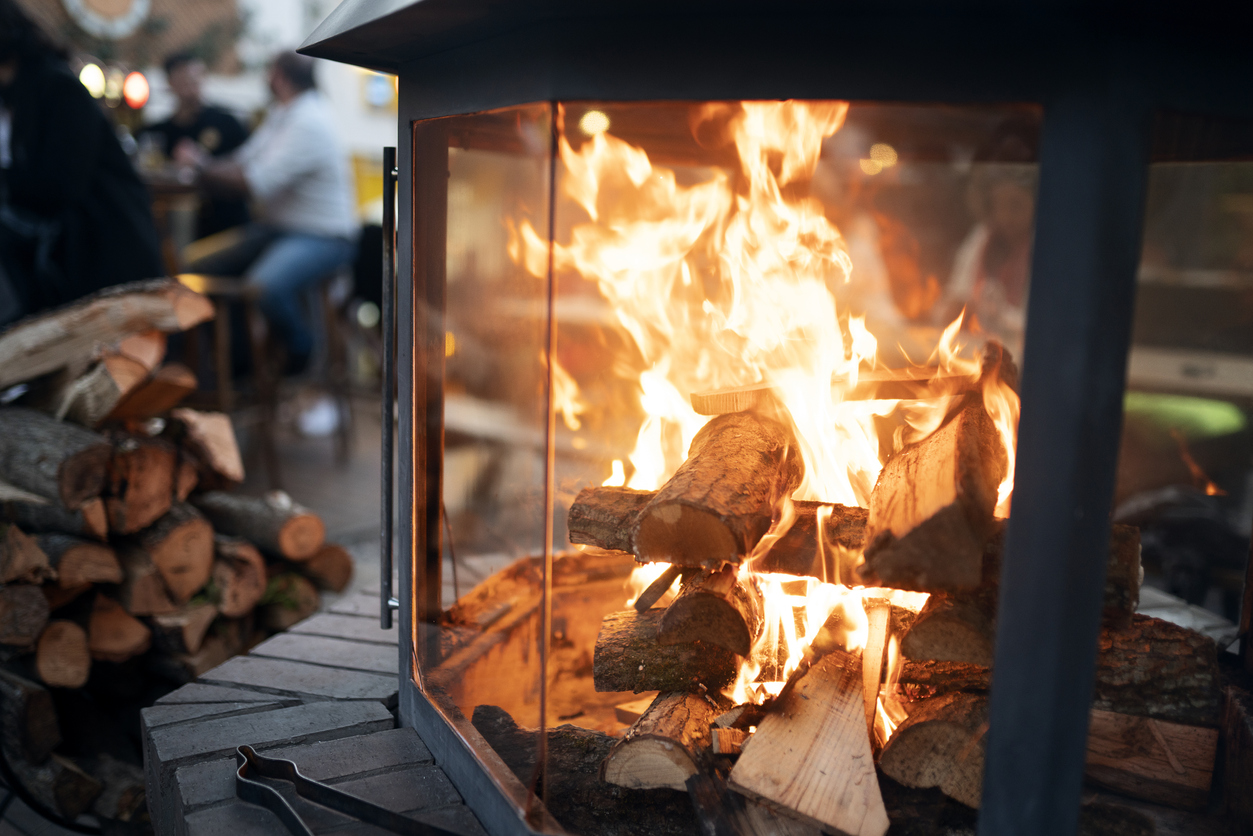
Wood-burning fireplaces require cleaning more often than other types of fireplaces due to the large amount of soot and ash they produce. Make sure you have a trash bag and bin on hand to collect all of the debris you’ll be cleaning out of the fireplace before beginning the process.
SUPPLIES
Whisk broom
Dustpan
Liquid dish detergent
Nylon bristle scrub brushes
Trisodium phosphate
Household bleach
Bucket
Razor blade
Paper towels
White vinegar
- Using a small shovel or whisk broom, remove ashes and dust from the fireplace. Collect the ashes in a dustpan, and dispose of the mess in a heavy paper bag or garbage can. Sweep dust and ashes off the andirons or grate, then take these pieces outside to clean.
- Outside, apply a few teaspoons of dish detergent to a water-dampened scrubbing brush, wet the grate and andiron with water, scrub until sudsy, and rinse well. Dry them and set them aside.
- Back at the fireplace, remove ashes and creosote by using a dry bristle brush or hand broom to sweep each wall from top to bottom. Repeat as many times as necessary before sweeping or vacuuming out remaining ashes and debris.
- Mix 3 tablespoons of TSP, ½ cup of bleach, and a quart of hot (not boiling) water in a bucket. Fill a spray bottle with the mixture and spray the fireplace walls and floor. Wait 5 minutes before wiping, then spray again for scouring.
- Dunk the bristle brush in the remaining solution and scrub the walls from top to bottom. Occasionally spray with cleaning solution to rinse and clean, wipe after scrubbing, and spray and repeat the scrubbing process if required.
- If the glass doors have lots of buildup, gently scrape the thickest stains off with a razor blade before using vinegar and water as outlined below to finish the job. (Alternatively, you can clean the glass with a commercial fireplace glass cleaner.)
RELATED: The Best Creosote Removers to Keep Your Chimney Clean
How to Clean a Gas Fireplace
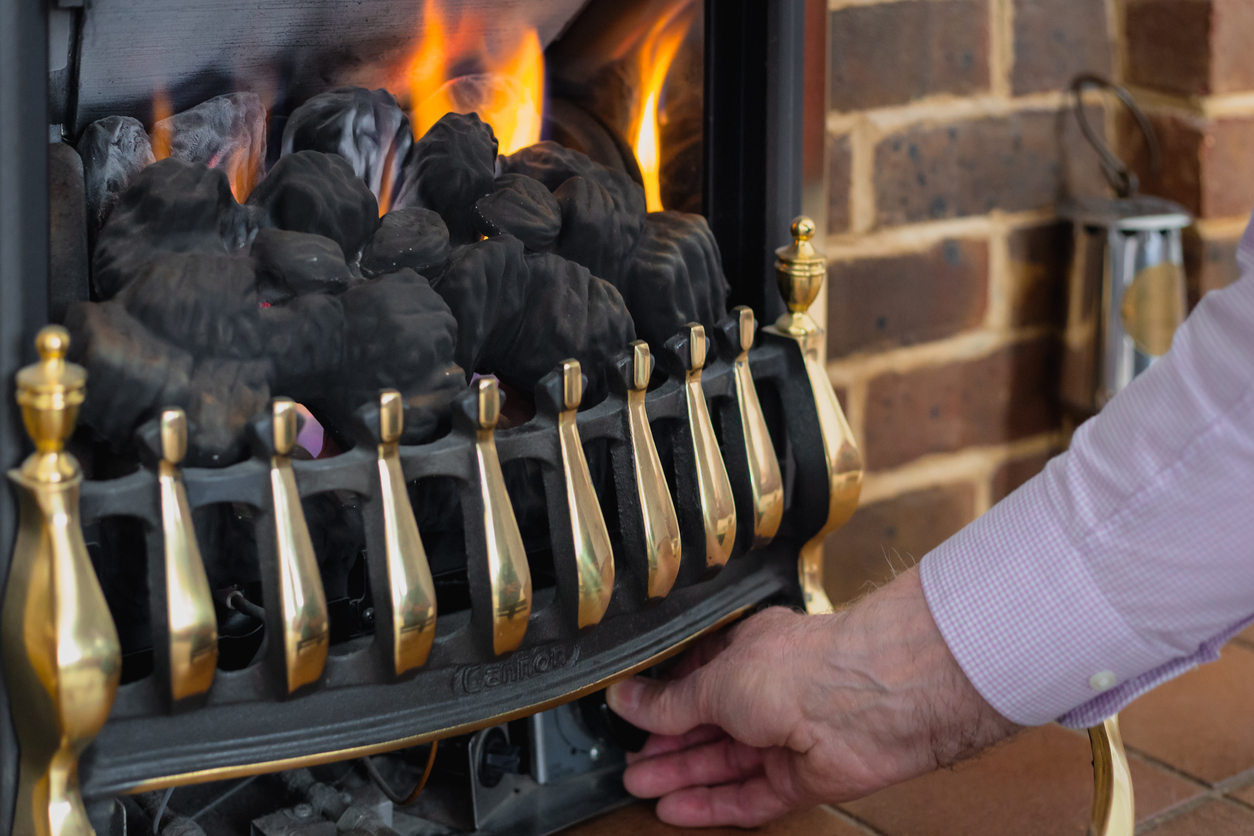
While a gas fireplace is far easier to keep clean than a wood-burning fireplace, it still requires some TLC from time to time to stay in tip-top working order. See the steps below and be sure to consult the owner’s manual for your gas fireplace for specific safety instructions.
SUPPLIES
Nylon bristle scrub brushes
Shop vac
Cleaning rags
Fireplace glass cleaner
- First, make sure the gas is turned off. Check that the valve leading from the wall is in the off position and make sure the pilot light is completely out.
- Take a picture of your fireplace setup, and then disassemble the fireplace by removing the logs. If possible, also remove the burner. Carry all of the pieces outside.
- Use a stiff bristle brush to clean away dust, dirt, or soot. Clear away any buildup in the burner’s holes.
- While cleaning, inspect the pieces for damage, including cracks, holes, or areas that are badly burned.
- Use a shop vac or hand vac to suck up dust or cobwebs that have accumulated on the hearth. If a gas fireplace contains tiny stones, cover the end of the vacuum with a piece of nylon hose and a rubber band to prevent it from sucking up the stones.
- Use a special fireplace cleaner to clean glass doors or fireplace covers. Never use standard glass cleaner, such as Windex, which can damage the glass.
- Using a soft cloth, wipe down the metal parts of the gas fireplace to remove soot and dust.
- Using the photo you took earlier (and manufacturer info) as a guide, reassemble your fireplace burner and logs and turn the gas back on.
- Go outside and check the exterior vent of the fireplace and clear away any vegetation or cobwebs that might be blocking the vent.
RELATED: The Best Gas Fireplace Inserts
How to Clean an Electric Fireplace
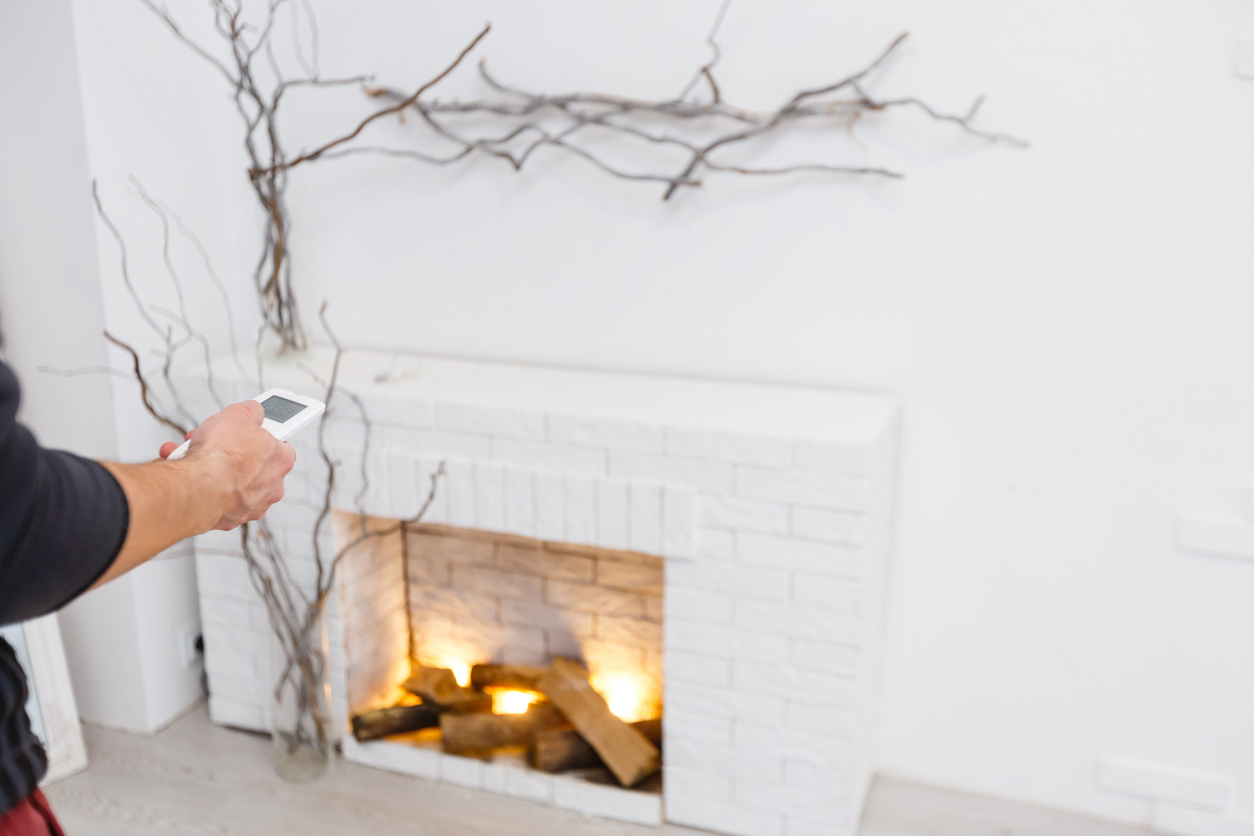
Electric fireplaces use a fan to circulate air over hot coils before blowing it back into the room. Since this type of fireplace doesn’t actually burn any substance to create heat, it is cleaner than gas or wood-burning fireplaces. However, electric fireplaces still require periodic cleaning to look good and function properly.
SUPPLIES
Shop vac
Soft brush
Microfiber cloth
Metal polish
- Begin by turning the fireplace off. Unplug the unit or, if it’s hardwired, switch off the circuit breaker that powers the unit.
- Open the glass doors or remove the glass shield covering the heating box.
- Vacuum dust and dirt out the vents of and the blower with a hose attachment.
- With a microfiber cloth, wipe out the fireplace’s inlet and outlet to ensure continued proper airflow through the heater.
- Remove dust from the fireplace’s mirror and light source using a soft brush.
- Use a soft brush or a brush vacuum attachment to remove dust from the ember bed, logs, stones, and fireplace andirons.
- Using a damp cloth, wipe down the side of the fireplace walls.
- Use metal polish to shine any metal surfaces.
- Electric fireplaces burn cleanly, but wipe down the glass in the cover or doors with a soft, dust-free cloth to remove film from wear or off-gassing; wipe again with a vinegar solution if necessary.
RELATED: 25 Bad Habits That Could Burn Down Your House
How to Clean Fireplace Glass Doors
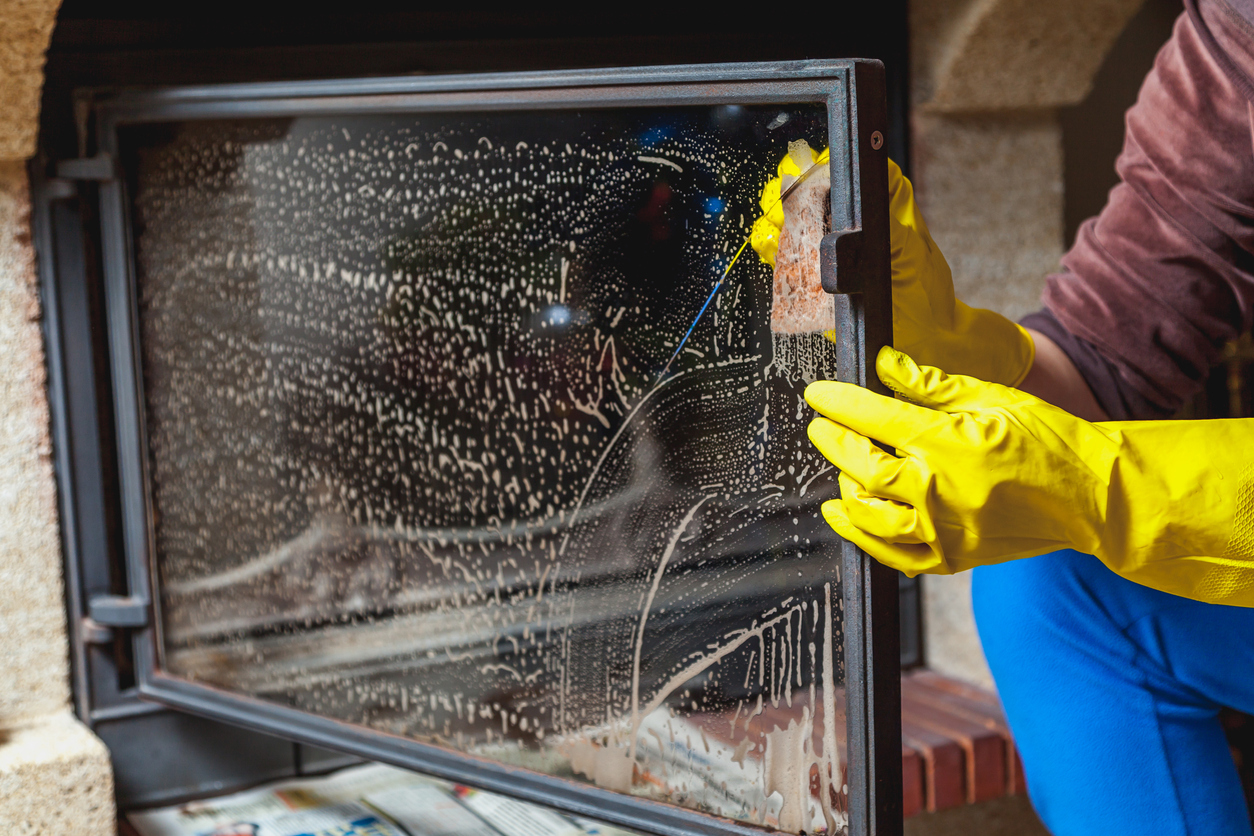
If your fireplace has glass doors, you will need to clean those too. The way you clean them has to do with how dirty they are; other factors to consider are how often you have fires, how long it’s been since the last cleaning, and the type of fireplace. Try one of the options below to clean your fireplace glass—if you have an owner’s manual it’s a good idea to check it to see which method the manufacturer recommends. Whichever method you choose, try wiping in a circular motion to avoid leaving lint behind.
- Once you have removed buildup on the glass (see above instructions), make a 50-50 solution of white vinegar and water in a clean spray bottle. You’ll probably need about a cup of solution. Spray glass doors and some folded paper towels with the vinegar solution. Gently scour the doors, and repeat the process with fresh paper towels.
- Some commercial glass cleaners are safe to use, but it is best to avoid them if you are unsure. In particular, ammonia and abrasive cleaners can damage fireplace glass.
- For best results on tough stains, especially for wood-burning fireplaces, use a commercial cream designed for fireplace glass such as Perkins Gas Fireplace Cleaner, which can remove film and soot.
How to Clean a Fireplace Exterior
If you have a brick fireplace front or facing that’s more than 50 years old, vacuum the area to pick up soot and dust. Do not scour it, as that could cause old bricks to crumble.
For all other facings, mix ¼ cup liquid dish detergent and 1 gallon of water in a clean bucket. Put clean, fresh water in a spray bottle and spray down the facing. For wood and brick, the water spray will prevent the cleaner from soaking in too deeply, too fast. For marble and tile, spraying will serve as a presoak.
Dip your brush in the bucket of detergent water and lightly scrub the facing surface. Spray the facing front with plain water and wipe dry with clean rags or paper towels.
Replace the grate or andirons. Clean your brush and broom with liquid dish detergent and water. Starting from the perimeter, gather your drop cloth or plastic sheeting up in a ball and throw it out.
RELATED: How To: Clean a Stone Fireplace
Uses for Fireplace Ash
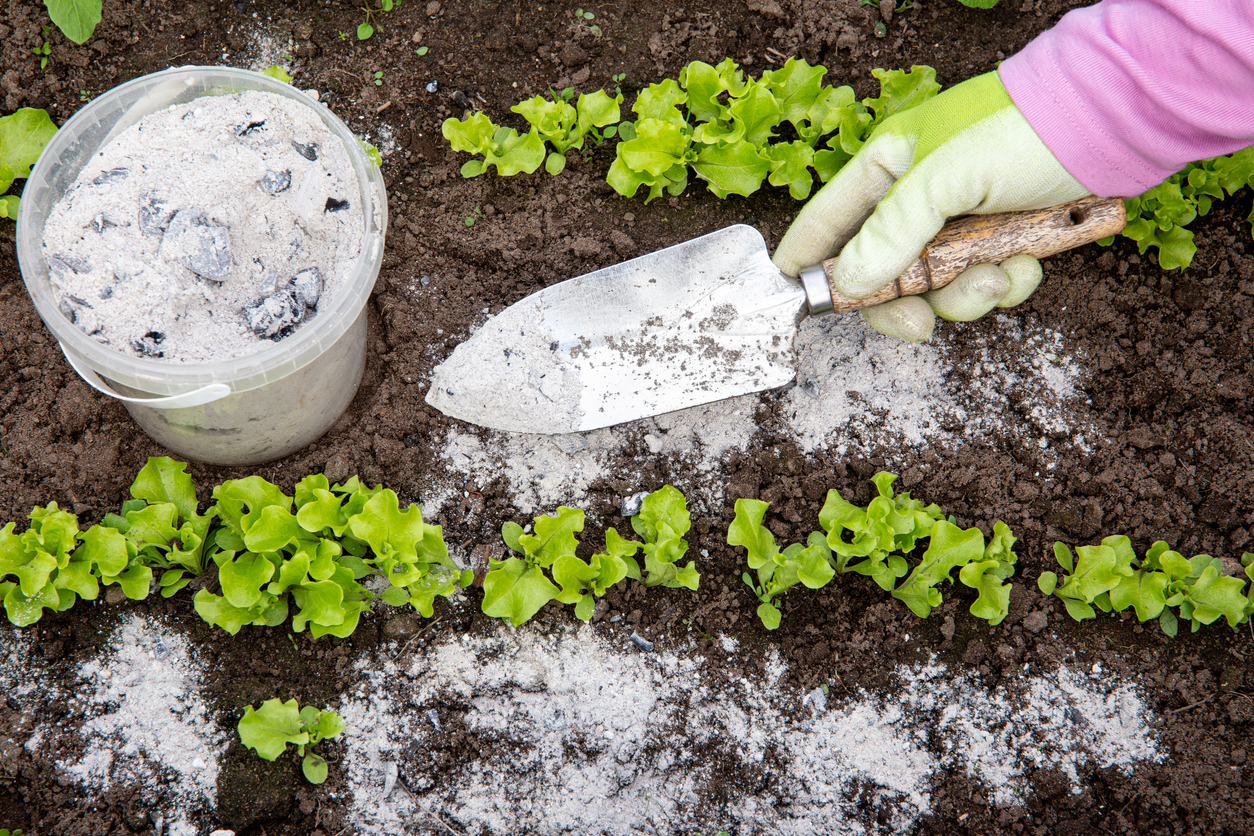
Before you toss the fireplace ashes you’ve collected, consider spreading them over your garden: Ashes (not creosote) are a great source of calcium, potassium, and other nutrients for plants that like low-acidity, high-pH soil. If you have issues with slugs, snails, or other soft-bodied pests, lay ashes around the bases of your plants as a deterrent. Store ashes in a dry, air-tight container and you’ll have them on hand to replace after rainfalls, which will wash away the ash salt that repels invaders.
Final Thoughts
Regardless of the kind of fireplace you have, you need to clean it from time to time to ensure it works properly and continues to add to your home’s aesthetics. Wood-burning fireplaces require regular cleaning to remove the ashes that build up with use. While gas and electric fireplaces don’t require nearly as much maintenance, it’s important to clean these types of fireplaces to ensure they operate properly and to maintain their appearance.
Before fireplace cleaning, make sure to take the proper safety precautions by ensuring the fireplace, hearth, and ashes have cooled and by shutting off gas lines and electrical connections.
FAQs
Read on to learn more tips for how to clean a fireplace, find out how often you need to clean out your chimney, and what to do with old creosote logs.
Q. How often should you clean your fireplace?
How often you should clean your fireplace depends on the type that you have. A wood-burning fireplace should be emptied of all but a 1-inch layer of ash after every use or at least every other use to prevent soot and ash from building up. Clean your gas or electric fireplace about once a year to ensure it looks its best.
Q. How do you clean fireplace doors?
Begin by removing the doors from the fireplace and laying them flat on a rag or soft cloth. You can use a commercial fireplace cleaner made specifically for fireplace glass or create your own cleaning solution by mixing one part vinegar to three parts warm water. Spray the glass with the solution, allow it to soak in, then use a soft cloth to wipe off soot and ash.
Q. How often should you clean your chimney?
You should clean your chimney (or have a professional chimney cleaning) once every year. The best time for fireplace cleaning is during the late summer or early fall, just before you begin using your fireplace.
Q. How do you dispose of creosote?
You can dispose of creosote-treated wood with your ordinary trash, according to the Environmental Protection Agency. However, some local municipalities have specific guidelines on disposing of creosote-treated lumber, so you should check with local regulations.
